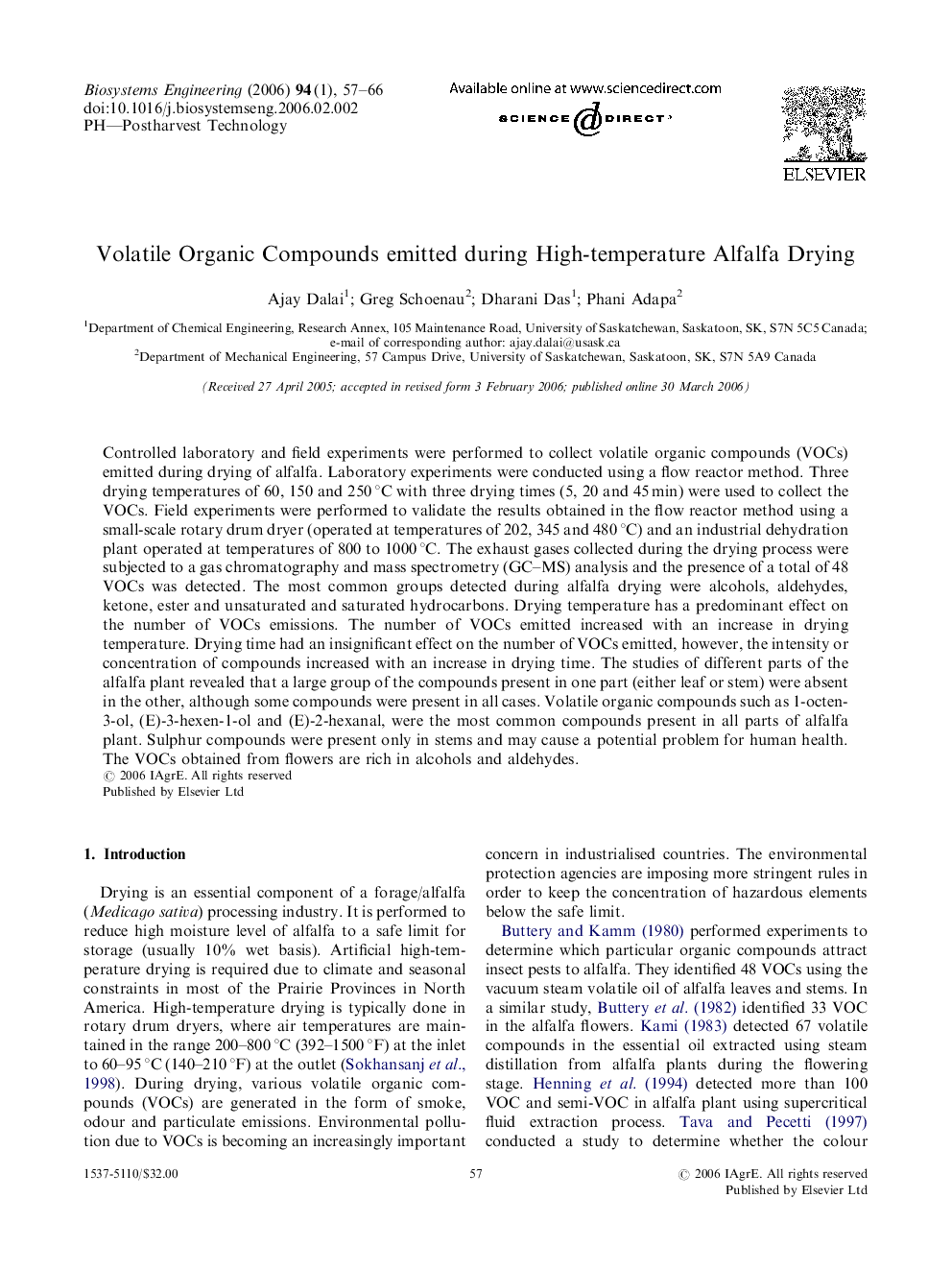| کد مقاله | کد نشریه | سال انتشار | مقاله انگلیسی | نسخه تمام متن |
|---|---|---|---|---|
| 1712621 | 1013150 | 2006 | 10 صفحه PDF | دانلود رایگان |

Controlled laboratory and field experiments were performed to collect volatile organic compounds (VOCs) emitted during drying of alfalfa. Laboratory experiments were conducted using a flow reactor method. Three drying temperatures of 60, 150 and 250 °C with three drying times (5, 20 and 45 min) were used to collect the VOCs. Field experiments were performed to validate the results obtained in the flow reactor method using a small-scale rotary drum dryer (operated at temperatures of 202, 345 and 480 °C) and an industrial dehydration plant operated at temperatures of 800 to 1000 °C. The exhaust gases collected during the drying process were subjected to a gas chromatography and mass spectrometry (GC–MS) analysis and the presence of a total of 48 VOCs was detected. The most common groups detected during alfalfa drying were alcohols, aldehydes, ketone, ester and unsaturated and saturated hydrocarbons. Drying temperature has a predominant effect on the number of VOCs emissions. The number of VOCs emitted increased with an increase in drying temperature. Drying time had an insignificant effect on the number of VOCs emitted, however, the intensity or concentration of compounds increased with an increase in drying time. The studies of different parts of the alfalfa plant revealed that a large group of the compounds present in one part (either leaf or stem) were absent in the other, although some compounds were present in all cases. Volatile organic compounds such as 1-octen-3-ol, (E)-3-hexen-1-ol and (E)-2-hexanal, were the most common compounds present in all parts of alfalfa plant. Sulphur compounds were present only in stems and may cause a potential problem for human health. The VOCs obtained from flowers are rich in alcohols and aldehydes.
Journal: Biosystems Engineering - Volume 94, Issue 1, May 2006, Pages 57–66